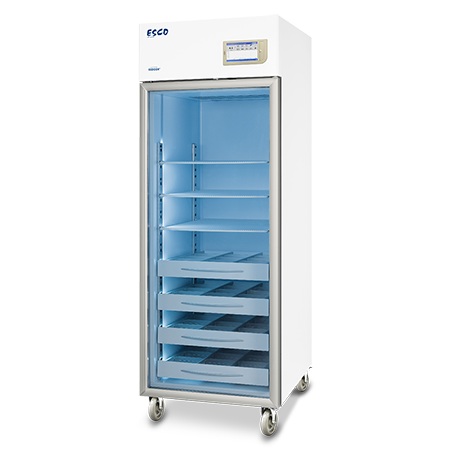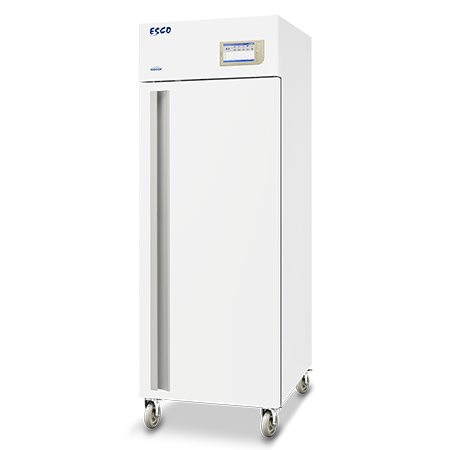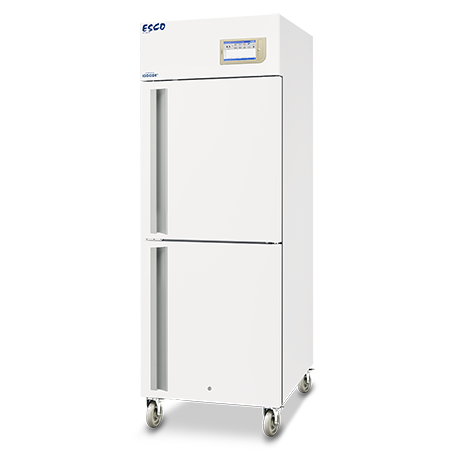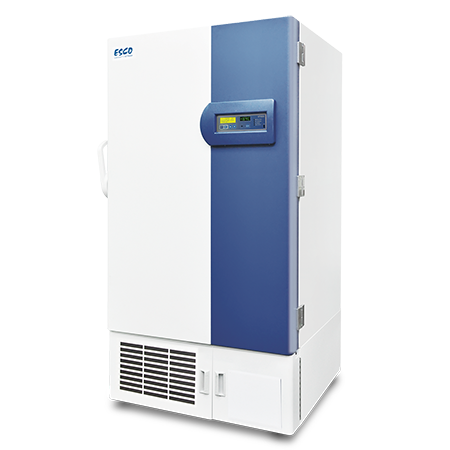I. Introduction
Cold storage equipment plays a vital role in a researcher’s life work. The protection of essential and irreplaceable biological samples is a critical factor for ensuring valid results. To properly serve the needs of the research community, different types of samples must be stored using appropriate techniques and storage temperatures. Once proper storage requirements are not met, the samples may be put at risk and eventually lead to sample spoilage and wastage. Hence, it is crucial to carefully choose the cold storage that can assure optimal product protection.
II. Cold Storage Guide to Models
| Type | Laboratory Refrigerator | Laboratory Freezer | Laboratory Combination Refrigerator and Freezer | Ultra-low Temperature Freezer | ||
|---|---|---|---|---|---|---|
| Temperature Range | +2°C to +15°C | -10°C to -25°C | -20°C to -40°C | +2°C to +15°C | -50°C to -86°C | |
| Application | short-term storage and preservation | short-term storage and preservation | short-term storage and preservation | long-term storage and preservation | ||
| Samples | biological sample, culture media, pure cultures, pharmaceuticals, reagent, vaccine, whole blood | biological sample, pharmaceuticals, reagent, vaccine | biological sample, culture media, pure cultures, pharmaceuticals, reagent | biological sample (DNA, RNA, protein cell extracts, tissue samples, enzymes) reagents, vaccine, human cells, viral specimen, other blood samples | ||
| Certification | CE compliance | CE compliance | CE compliance | CE compliance, | ||
| Available Capacity | 128 L, 347 L, 620 L, 1355 L | 128 L. 347 L, 620 L, 1355 L | 360 L, 544L | Refrigerator: 170 L Freezer: 160 L | Refrigerator: 260 L Freezer: 265 L | 363 L, 480 L, 597 L, 714 L |
| Door Material | triple-pane glass door | insulated solid door | insulated solid door | insulated solid door | ||
| Interior | AISI 304 stainless steel | AISI 304 stainless steel | AISI 304 stainless steel | AISI 304 stainless steel | ||
| Defrost | automatic | automatic | automatic | manual | ||
| Air Circulation | forced air | forced air | forced air | natural convection | ||
| Refrigerant | HFC | HFC | HFC | HFC | ||
| Alarms | audible and visual alarms for door open, high/low temperature, clogged condenser filter, power failure, etc. | audible and visual alarms for door open, high/low temperature, clogged condenser filter, power failure, etc. | audible and visual alarms for door open, high/low temperature, clogged condenser filter, power failure, etc. | audible and visual alarms for door open, high/low temperature, hot condenser, high ambient, power failure, low battery, etc. | ||
| Type | Lab Refrigerator, Lab Freezer, Lab Combination Refrigerator and Freezer | Ultra-low Temperature Freezer | |||
|---|---|---|---|---|---|
| Controller | Standard | Touchscreen | Silver (UUS-A) | Gold (UUS-B) | |
| keypad buttons, backlit LCD display | ✓ | ✓ | ✓ | ||
| touchscreen interface | ✓ | ||||
| microprocessor | ✓ | ✓ | ✓ | ✓ | |
| visual and audible alarms | ✓ | ✓ | ✓ | ✓ | |
| remote alarm output | ✓ | ✓ | ✓ | ✓ | |
| digital temperature display | ✓ | ✓ | ✓ | ✓ | |
| temperature live graph | ✓ | ||||
| GSM, ethernet connection | ✓ | ✓ | |||
| USB and SD card slot for data download | ✓ | ✓ | |||
| key lock | ✓ | ✓ | ✓ | ||
| electronic door lock | ✓ | ||||
III. Must-Have Features of a Cold Storage
A. Must-have Features of Laboratory Refrigerator and Freezer
Efficient refrigeration design
Low power consumption
Forced-air circulation system
Excellent temperature uniformity
Fast temperature recovery after door opening
Intelligent automatic defrost
Intuitive and easy-to-use microprocessor controller
Insulated door with magnetic gasket seals
Environment-friendly refrigerants
Energy-saving LED light
B. Must-have Features of Ultra-Low Temperature Freezer
Efficient refrigeration design
Low power consumption
Excellent temperature uniformity
Fast pull-down time
Extended warm-up time during power failure
Fast temperature recovery after door opening
Intuitive and easy-to-use microprocessor controller
Ergonomic door handle for easy opening
Superior insulation system
Individual inner door configuration
Environment-friendly refrigerants
C. Is Cheaper better? Lab Refrigerator vs. Household Refrigerator
The advancement of science and technology in the field of medicine and research has resulted in high demand for biological sample storage. Laboratory products and samples are at risk of degradation due to their components’ heat-sensitivity and their vulnerability to the rapid growth of microorganisms. To prevent these unwanted instances from happening, refrigeration plays an important role in preserving samples’ integrity and viability. Refrigerated vaccines, for example, must be stored at between 2°C and 8°C to maintain their potency, otherwise, it may result in product loss. Household fridges and lab fridges are often entrusted to store these valuable samples, but which of the two is the right equipment?
IV. Factors to Consider When Buying Cold Storage
Laboratory cold storage products are used for short-term or long-term storage and preservation of essential and irreplaceable samples such as DNA, RNA, protein cell extracts, reagents, vaccines, pure cultures, blood samples, and many more.
FACTORS TO CONSIDER WHEN PURCHASING COLD STORAGE EQUIPMENT
- Type of application
- Temperature requirement
- Capacity
- Compressor type
- Ambient temperature
- Ergonomic features
- Design and material
- Insulation system
- Environment-friendly refrigerants
- User-friendly control system
- Energy efficiency
- Accessory inclusions
- Warranty period
- After-sales service
QUESTIONS TO ASK BEFORE PURCHASE
Are the samples and applications compatible with the recommended model?
Can the laboratory utilize a lab refrigerator?
Can the laboratory utilize a lab freezer?
Can the laboratory utilize an ultra-low temperature freezer?
How much space will each cold storage equipment require in the laboratory?
What is the construction or material of the cold storage equipment?
What are the safety features of the cold storage equipment?
Is the equipment energy-efficient?
How long is the warranty period?
Are spare parts readily available?
What are the additional maintenance costs (parts replacement, consumables, etc.)?
WHY YOU NEED A NEW ONE
Setting up a new laboratory.
Replacing an old and less efficient unit with high operating costs.
Defective cold storage equipment.
The existing unit is incompatible with the samples being stored.
The refrigeration system of the existing unit is not reliable and does not reach the set temperature.
Existing cold storage equipment failed the validation and is not safe to use anymore.
V. 7 DOs and DON'Ts of Vaccine Storage
Vaccines make a substantial contribution to global health. It works by training the immune system to recognize and fight off the targeted pathogens such as viruses or bacteria. It gives us the immunity to avoid contracting a disease. To guarantee the viability of these temperature-sensitive products, it is vital to know their proper storage and preservation from the time they are manufactured until they are administered.
Here are some Do’s and Don’ts of Vaccine Storage:
USE A PURPOSE-BUILT COLD STORAGE
It is highly recommended to purchase or use a laboratory-grade refrigerator and freezer to avoid unexpected equipment failures that can lead to sample spoilage and wastage.NEVER STORE LOOSE VIALS
Always store vaccines in their original packaging until ready for use. Loose vials may increase the risk of administration errors and vaccines' exposure to light.
FIRST TO EXPIRE, FIRST OUT
Always follow proper sample arrangement and stock vaccines according to the expiration date. The First to Expire, First Out or FEFO, is an inventory management method that allows for products with the shortest shelf-life to be distributed or used first.DO NOT STORE FOOD
Do not place food or beverages in the same storage unit as the vaccines. Never use your cold storage equipment in the laboratory as storage for products intended for consumption.EQUIP YOUR COLD CHAIN WITH DATALOGGERS
Digital data logger allows vaccine providers to set alarms when there are temperature fluctuations. It also provides more accurate monitoring as compared to chart recorders and secures the vaccine’s storage conditions.PROPER LABELING AND ARRANGEMENT
Arrange vaccines and diluents in rows and allow space between each row to promote airflow. Avoid overcrowding and arrange all products properly. Allow space between each row to promote uniform airflow.STORE AT APPROPRIATE TEMPERATURES
Exposure to temperatures outside required ranges may result in reduced vaccine potency and increased risk of vaccine-preventable diseases.








